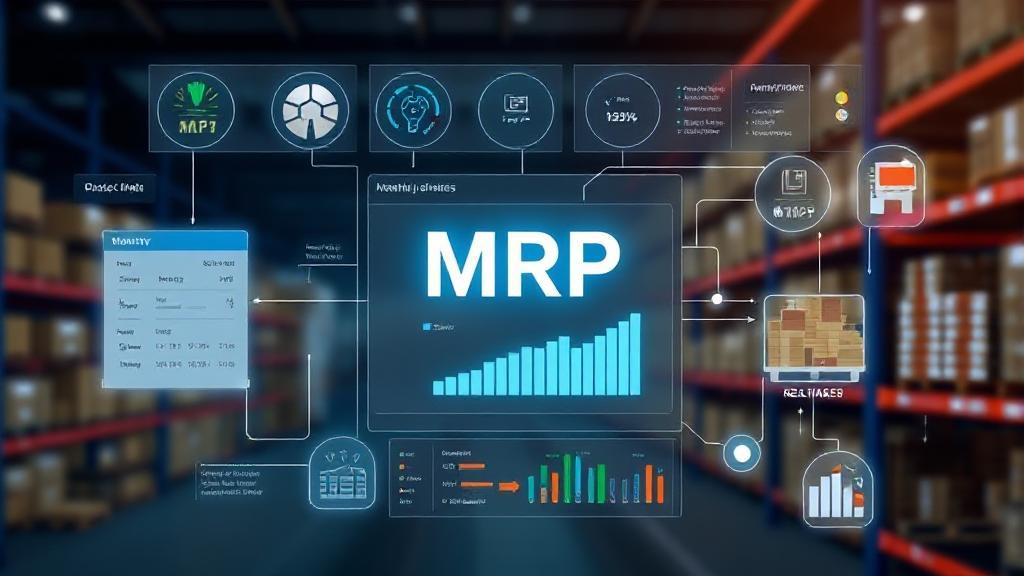Introduction to MRP Systems
Material Requirements Planning (MRP) is a production planning, scheduling, and inventory control system used to manage manufacturing processes. While most MRP systems are software-based, it is possible to conduct MRP manually. The primary objective is to ensure materials and products are available for production and delivery to customers while maintaining the lowest possible inventory levels.
Core Components
An MRP system operates with three fundamental inputs:
-
Master Production Schedule (MPS): A plan detailing what needs to be produced and when, incorporating:
- Customer orders
- Forecast demand
- Safety stock requirements
-
Bill of Materials (BOM): A comprehensive product recipe that includes:
- Raw materials needed
- Component parts
- Sub-assemblies
- Quantities required for each item
-
Inventory Status Records: Detailed information about:
- Current stock levels
- Outstanding orders
- Lead times
- Safety stock levels
How MRP Systems Work
MRP systems operate through the following process:
- Demand Forecasting: Derived from customer orders or sales forecasts
- Netting: Calculating net requirements by subtracting available inventory
- Lot Sizing: Determining optimal order sizes
- Scheduling: Planning production activities
- Order Release: Generating purchase and work orders
Benefits of MRP Implementation
- Improved Inventory Management: Reduces excess inventory and carrying costs
- Enhanced Production Efficiency: Streamlines processes and reduces downtime
- Better Customer Service: Improves delivery performance and satisfaction
- Cost Reduction: Optimizes inventory levels and production schedules
- Enhanced Supply Chain Coordination
Common Challenges and Solutions
Data Accuracy
"Garbage in, garbage out" is particularly relevant for MRP systems.
Organizations should:
- Regularly audit inventory records
- Update BOMs promptly
- Validate production schedules
Integration Requirements
Modern MRP systems often need to integrate with:
- Enterprise Resource Planning (ERP) systems
- Supply Chain Management software
- Quality Control systems
- Warehouse Management Systems
Industry Applications
Different industries utilize MRP systems in various ways:
| Industry | Primary Focus |
|---|---|
| Automotive | Component scheduling |
| Electronics | Just-in-time inventory |
| Food & Beverage | Perishable inventory management |
| Pharmaceuticals | Batch tracking |
Evolution and Future Trends
MRP has evolved into more comprehensive systems:
The future of MRP systems is being shaped by:
- Artificial Intelligence and machine learning
- Internet of Things (IoT) integration
- Cloud-based solutions
- Real-time analytics
For further information, explore these resources:
